By Suzanne A. Marshall from the June 2018 Edition
SAYULA, JALISCO – We were encouraged by friends to take a jaunt for a few days to Sayula, Jalisco. About an hour from Guadalajara, Sayula is a smaller city of about 50,000 people. There are a number of interesting attractions there and we headed off down the highway to check in at our booked hotel, the Gran Casa Sayula. Typical of Mexico, there is no grand en-trance or long driveways greeting you. One finds a demure en-trance with a tidy sign and not much parking to be seen until you check in and find out the ‘lay of the land’. There is, indeed, a parking lot, but one must enter a driveway a little way down the street that takes you around to private parking behind the hotel.
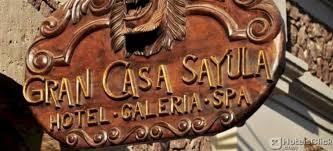
The hotel itself is lovely and grand, with a huge enclosure boasting a very good dining room, a pool, a spa and elegant rooms both on the main level and an upper floor. The hotel manageress proved to be fluent in English and very knowledgeable about locations and directions. This included street maps which became extremely useful. The location of the hotel is quite central, so we were able to walk to all of our chosen sites. And walk we did! My walking tracker pegged us in at 14,000 steps one day and it seemed like no effort at all as we were too busy gawking and exploring.
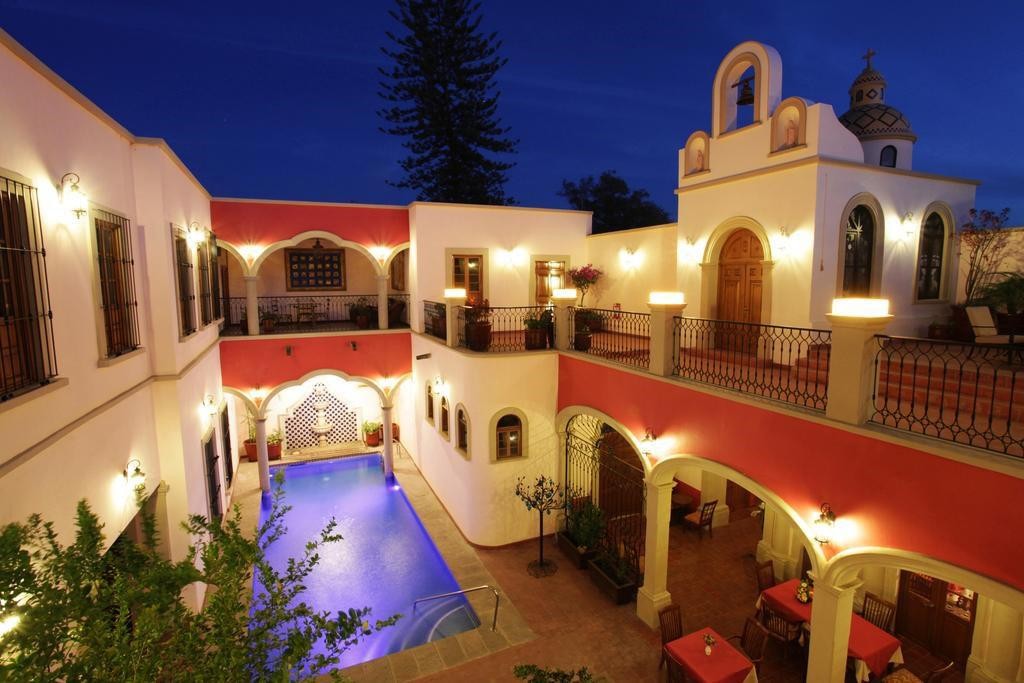
Like most Mexican towns, Sayula has a lovely town square with a gazebo and shops galore. But this time we had specific tar-gets to find. Our first destination was the world-famous Ojeda knife crafters store and work shop. There is a tidy storefront on the sidewalk where tourists and shoppers can enter and view the fabulous array of cutlery, chef knives, hunting knives, dag-gers and more. Born in 1935, Don José Ojeda Larios is the founder and part of the thirteenth generation of family black-smiths. Because of the tendency of carbon steel to rust, Don Jose and his two sons decided to work with very high quality stainless steel and Damascus steel.
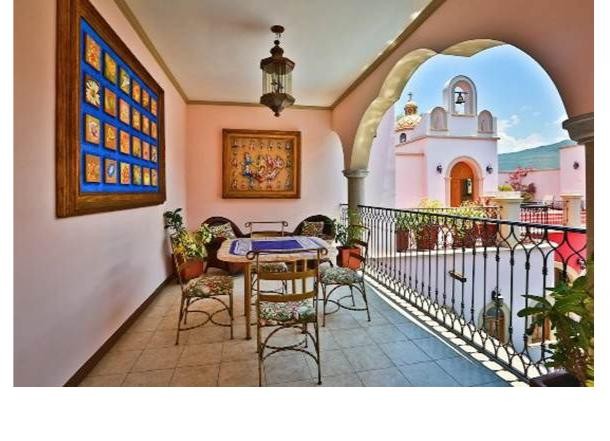
Their highest standard of products has led to importation of materials from Alaska, Siberia and Africa. These materials in-clude stones such as lapis lazuli, jade, turquoise, parrot wing, frog and snake skin, ivory and mammoth tooth fossil and exotic woods. The quality and beauty of some of these products is astonishing. The carved and decorous blades are also replete with jeweled and bone-carved handles. It was quite a site to see and of course we happily left with a practical purchase of chefs’ knives and paring knives. They will last forever.
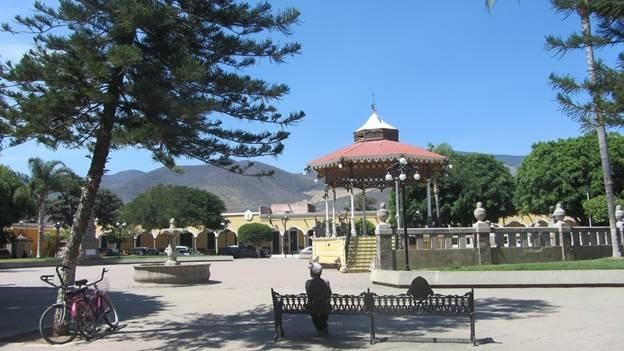
Once we had completed our visit to Ojeda knives, our curiosity took us to another delightful shop and factory… a candy-making venue!
Welcome to Lugo Cajeta de Leche and the producers of yum-my hand-made milk caramel candy and an assortment of sweet syrups and delectables. If you’ve got a sweet tooth, samples are available and they’ll let you try your hand at stirring the caldron full of caramelizing milk. The smell alone is enough to make you salivate. We did all of the above and left with free samples, too. These sweets can be found in a myriad of shops and tiendas throughout Mexico.
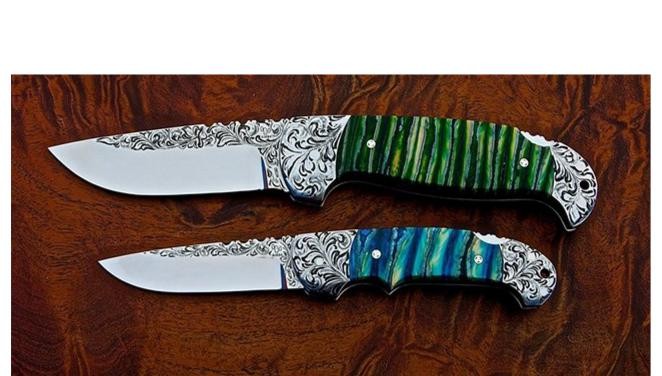
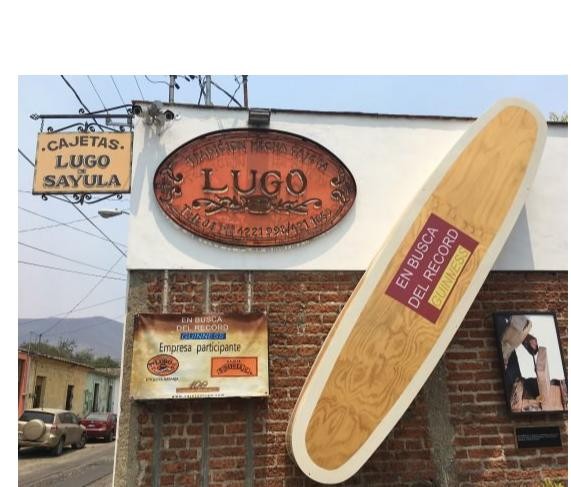
container displayed on the outside wall was a surfboard!
The story dates to the 20th century where a young man by the name of Agustín Lugo was arrested for selling Rompope (an alcoholic beverage) to a group of soldiers. This was going to be a tricky livelihood so, in 1915, he decided to produce a popular Spanish dessert of the time which became the milk caramel products produced by Lugo Cajeta to this day. Apparently, this milky sweet was a sustenance the Mexicanos loved and many began to drop in for the product off the train that was popular transport for the many workers passing through Sayula. The product itself is made from raw milk cooked in copper caldrons and stirred with paddles for 3-4 hours, some vanilla is added then the candy is left to set and thicken.
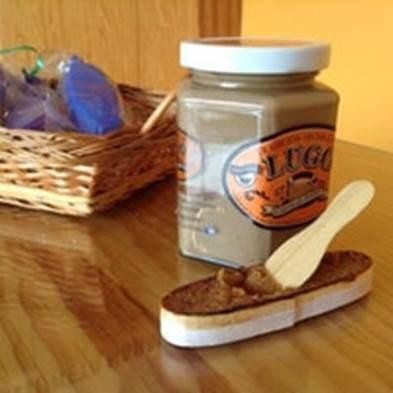
Some of the products produced today are available in jars as caramel syrup and as toffee-like candy packaged in hand-made wooden containers complete with lids and small wooden spoons that accompany the product. This business now em-ploys quite a few residents of Sayula and the company has expanded to three sites for manufacturing.
Once our tour was completed at the candy maker, we decided it was time to find the local tequila distillery. Next on our agenda was a walk to Distileria Rojesa whose slogan is ‘El Arte de Destilar’, the art of distilling. Walking into the open yard of the distillery, I found it to be very non-commercial looking with an open dirt yard; a few tables under the trees; and a long low-lying hacienda type building. This was a much quainter approach for a street presence than you are going to find in the town of Tequila itself. A pleasant young man greeted us from the ‘tasting’ shop and had been told by our hotel manageress that we would be coming. It was a very quiet day in Sayula so that was a good arrangement. We might otherwise have walked for nothing. During high season, they receive tours and larger groups as I understand it. But this smaller group was nice with just the four of us and we felt relaxed and were able to ask questions at our leisure.
Indeed, this was a much smaller operation than we had toured before, giving the impression that they were catering to a much smaller market and produced perhaps a less common brand of various tequilas. We toured the areas where they burned the wood and produced the heat for large ovens. Then, we fol-lowed the processes through to the storage of wooden kegs for aging. One of the things I noticed was that they were composting the agave remnants in a back area where we were told the compost would be taken to their agave groves in the hills and mixed with the soil there to enrich and fertilize the ground. A great idea, I thought.
Later, we followed our guide to the product display area where we enjoyed a few samples of the tequilas and their specialty which is a unique blend of drink called raicilla. I am told by friends that this is an acquired taste and a preference that might be acquired like the various scotch whiskies that so many will debate about. All in all, it was a very enjoyable tour and always a pleasure to see more of the ‘hands on’ production approach by Mexican workers than those of the large factory type producers.
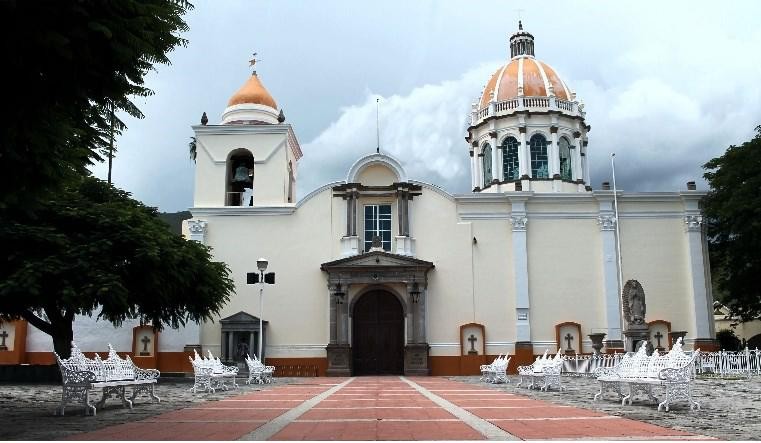
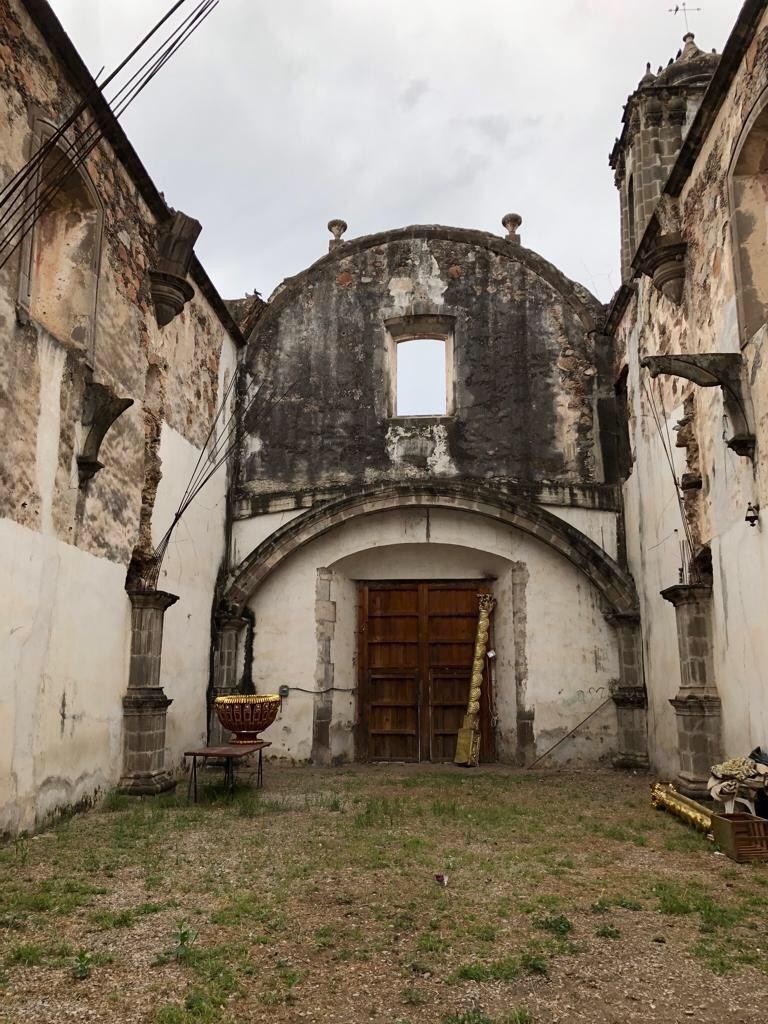 Our final destination for this excursion was the Museum of the Sanctuary of Sacred Art of our Lady of Guadalupe attached to a beautiful cathedral. This proved to be a fascinating stop, with the history of many of these artifacts dating back to the 17th century. The original church was completed in 1795 but, due to an earthquake (which I was unable to date), the sacred pieces were rescued and became part of the museum which has expanded further with the addition of other sacred artifacts and relics. The remains of the original church are still standing and gave us a sense of the calamity that had struck. The photos included with this article give you an idea of the exquisite craftsmanship of the various art pieces as well as the construction of the cathedral. I would have to say that a few days spent in Sayula Jalisco can prove to be most interesting and educational. There are so many facets of Mexican culture to absorb and so much of it is nearby our beautiful seaside location in Manzanillo. Need a break, or driven by curiosity? You needn’t go far to find what you may be looking for. And, I might add as a last comment, that the shopping is great and so is the food. Always nice to know.
Our final destination for this excursion was the Museum of the Sanctuary of Sacred Art of our Lady of Guadalupe attached to a beautiful cathedral. This proved to be a fascinating stop, with the history of many of these artifacts dating back to the 17th century. The original church was completed in 1795 but, due to an earthquake (which I was unable to date), the sacred pieces were rescued and became part of the museum which has expanded further with the addition of other sacred artifacts and relics. The remains of the original church are still standing and gave us a sense of the calamity that had struck. The photos included with this article give you an idea of the exquisite craftsmanship of the various art pieces as well as the construction of the cathedral. I would have to say that a few days spent in Sayula Jalisco can prove to be most interesting and educational. There are so many facets of Mexican culture to absorb and so much of it is nearby our beautiful seaside location in Manzanillo. Need a break, or driven by curiosity? You needn’t go far to find what you may be looking for. And, I might add as a last comment, that the shopping is great and so is the food. Always nice to know.
Download the full edition or view it online
—
Suzanne A. Marshall hails from western Canada and has been living the good life in Manzanillo over the past 8 years. She is a wife, mom and grandma. She is retired from executive business management where her writing skills focused on bureaucratic policy, marketing and business newsletters. Now she shares the fun and joy of writing about everyday life experiences in beautiful Manzanillo, Mexico, the country, its people, the places and the events.



